#Chickpeas and Green Lentils
Text
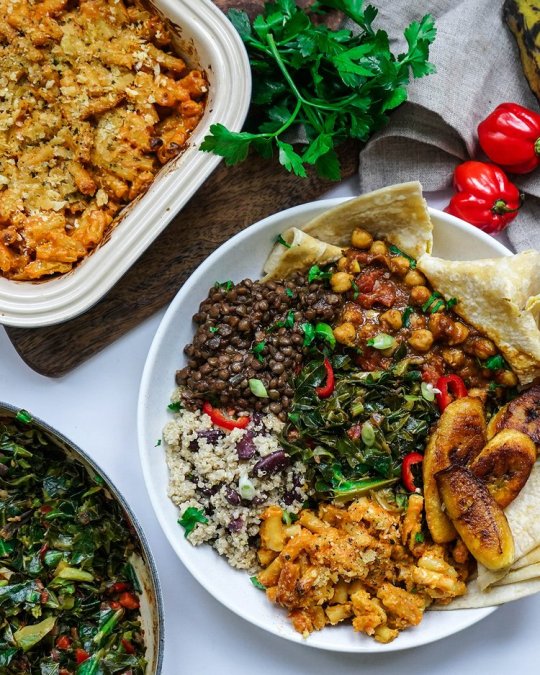
Vegan Caribbean Feast
#vegan#lunch#dinner#caribbean cuisine#rice bowl#buddha bowl#lentils#roti#mac and cheese#plantains#callaloo#kale#channa#chickpeas#jamaican jerk#tomatoes#red onion#ginger#thyme#green onion#garlic#cashews#miso#nutritional yeast#mustard#paprika#turmeric#tamari#cumin#curry
104 notes
·
View notes
Text









Chapter 80 page 18
#mameshiba#fava bean#fava beans#chickpeas#chickpea#edamame#black bean#black beans#natto#peanut#peanuts#green pea#green peas#lentils#lentil#tiger bean#chill bean#cocoa beans#cocoa bean#almond#almonds#red bean#red beans#cashew nut#cashew nuts#white soybean#black soybean#soybean#soybeans#boiled bean
49 notes
·
View notes
Text
nobody ever tells you that adult life is just finding countless different ways to prepare beans and rice
8 notes
·
View notes
Text
Reblog With Your Favorite Legume Recipe
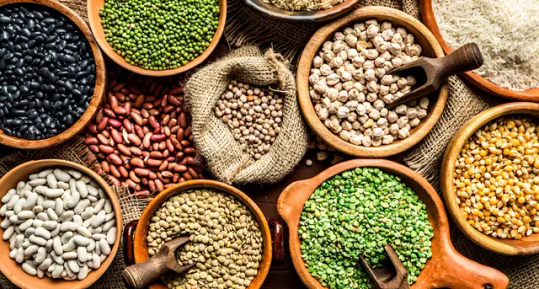
I'm trying to force myself to eat more beans and legumes as part of my diet but I hate boil beans, peas, and chillis so I'm looking for alternatives. So I turn to you Tumblr.
Share in the reblogs your favorite bean, pea, lentil, chickpea, tofu, or even peanut recipes.
5 notes
·
View notes
Text

Vegan Shepherds Pie
#savoury#dinner#winter#savoury pie#savoury pies#lentils#mashed potato#mashed potatoes#shepherds pie#vegan#recipe#recipes#potato#potatoes#corn#celery#green lentils#brown lentils#chickpeas#peas
15 notes
·
View notes
Note
frankieeee im making soup tonight for a dinner party but idk what soup to make What is your favorite soup recipe!
OOOH GOOD QUESTION. splitting this up so awkwardly bc i said so much… also full disclosure i was vegan for 5 years until a year ago so most of the soups i make nowadays are still at least vegetarian 😔 unless you don’t eat meat in which case 😄
you can never go wrong with a classic minestrone imo which is basically a broth of your choosing with whatever vegetables you have on hand (https://ricette.giallozafferano.it/Minestrone-di-verdure.html)
but i’m also a big fan of coconut milk-based soups such as https://ohmyveggies.com/thai-pumpkin-soup-recipe/
or a good chicken soup with a hefty amount of dill ❤️
i think you can never go wrong with anything that has a root vegetable base (potatoes, pumpkin, winter squashes, etc) and i love anything i can add loads of ginger to!!
some fav soups of mine are carrot and ginger (exactly what it sounds like, i roast carrots and fresh ginger with oil salt pepper and it would be mad delish with curry powder too & blend it up with broth and you could totally add cream or milk),
pastina with chicken broth and tons of grated cheese (i follow my heart when making it there’s no recipe but it’s comfort food),
oooh you could even do a broth started with sautéed zucchini in a pan (onions, some sort of cured meat if you’re a meat eater, that type of stuff) and pasta!!!
my mom did a lot of soups growing up perché siamo napoletane and that’s peasant food so OH MY GOD LENTIL SOUP. LENTIL SOUP. carrot celery onion lentils add some fresh greens once boiling maybe some chopped tomatoes…
my mom also made this awesome mushroom soup with quinoa kale spinach and cinnamon when i was sick last year and it healed me (spiritually).
escarole soup obvs http://www.christopherpless.com/recipe/zuppa-di-scarola/ also
zuppa di ceci chickpea soup was an absolute STANDARD in my house we usually didn’t blend it (whole chickpeas https://ricette.giallozafferano.it/Zuppa-di-ceci.html) but it can totally be blended too (https://www.italianfoodforever.com/2009/11/zuppa-di-ceci-creamy-chickpea-soup/)… i could go on
#i LOVED to see this ask it made my day. soup strega (me)#if any of the recipes linked have oregano i’ll kms i don’t really use recipes for anything so i just grabbed what i could find for examples#my mom trusts giallo zafferano’s italian recipes so i do by extension#i can’t eat most asian soups as i have this stupid allergy which makes me allergic to soy coconut all leafy greens all beans and legumes#and seaweed#but i fucking love chickpeas lentils they’re like best friends from childhood i don’t speak to anymore#i have yet to explore fish soups esp since i can’t have soy seaweed etc maybe i’ll have to go northern euro for that
6 notes
·
View notes
Text
Quinoa salad with hummus and cabbage (aka. did somebody say plant protein)
Ingredients for 4 portions:
1 dl white quinoa
2 dl black quinoa
1 dl green lentils
6 dl water
1 red pointed cabbage (or regular, i doubt it matters)
2 avocados
4 tsp olive oil
2 tsp apple vinegar
1 tsp mustard
1 tsp honey
Hummus with sun-dried tomatoes:
240g boiled chickpeas (can be canned)
1 dl olive oil
3-4 cloves of garlic
3 tablespoons lemon juice
1 tablespoon tahini
3-4 sun-dried tomatoes
1 teaspoon ground cumin
0,5 teaspoons cayenne pepper
0,5 teaspoons ground cilantro
Cold water
Salt & pepper
Preparation:
Boil quinoa as per the instructions on the packet. I boiled my quinoa and lentils in the same pot and it turned out fine.
Chop your pointed cabbage into appropriate bite sizes. In a glass or bowl, mix olive oil, apple vinegar, mustard and honey into an even consistency vignarette. Taste test with salt and pepper, and then mix it well with your cabbage.
Cut avocado into slices.
Hummus:
Blend all ingredients together. I use one of those food chopping things you have to pull like a lawnmower, which... does the job, lol.
Add cold water until your hummus is the desired consistency. I've heard that adding this water in the form of crushed ice actually makes the hummus more creamy, but I haven't tried that out yet. Cold water works just fine.
Taste test with ground cumin, salt and freshly ground black pepper.
For serving, arrange the salad in layers in your bowls, starting with hummus at the bottom, then quinoa and lentils, then avocado slices, and then topping off with a healthy layer of cabbage.
Enjoy!
#i made this with leftovers and loved it so. scaled it up. its a recipe now#white quinoa#black quinoa#green lentils#pointed cabbage#avocado#olive oil#mustard#apple vinegar#honey#chickpeas#garlic#lemon juice#tahini#sun dried tomatoes#cumin#cilantro#cayenne pepper#water#salt and pepper#hummus
2 notes
·
View notes
Text

#Natural Pulses#Organic Pulses#Pulses#supplier#Exporter#Maharashtra#India#Mumbai#Chickpeas (Garbanzo Beans)#Lentils (Red#Green#Black)#Kidney Beans#Black-eyed Peas#Pulses export#India export data of Pulses
0 notes
Text
6 Ideas to Create a Light and Nutritious Dinner
It’s an adventure to find tastes and components that give the body life and the plate colour. Here are 6 ideas to create a nutritious dinner.
Making a nutritious diner is similar to creating an aesthetically beautiful, health-promoting artwork. It’s an adventure to find tastes and components that give the body life and the plate colour. Here are 6 ideas to create a nutritious dinner
1. Focus on…
#alu#authentic#beans#blog#bread#chickpea#chickpeas#Cook#cooker#Cookery lessons#curry#dinner#dip#energy#Event#food#green#healthy#lentil#lentils#lessons#meal#noodles#nuts#oil#olive#peas#quinoa#raita#Recipes
0 notes
Photo

Keeping Our Heart Healthy So We Can Live A Vibrant Life And Serve Others
In our last blog post, we talked about the importance of serving others and how serving others builds relationships and gives us opportunities to share our faith, which is truly the only thing we really have to give with eternal value.
However, many of us, including myself, don’t always take the time and effort to take care proper care of ourselves. One of my favorite sayings is, “If you don’t care of your body, where will you live?” For this very short time we have here on earth we need our bodies to be strong and healthy so we can serve God with all of our hearts, minds, souls, bodies and strength! We also need rest, but for this blog post, let’s focus on our heart health. Our physical heart, that is (we talk a lot about our spiritual heart health in class!). When our heart is healthy, it’s much more likely that we will be active and able to live vibrantly and have the strength and energy to serve others. The Bible even goes as far as to say that it will take strict training to run the race and emphasizes that the motivation behind running the race is key. Is our motivation for a healthy heart because we want to look good physically or to live a longer life? Or is our motivation to honor God with our body, the temple of the Holy Spirit and to serve God and serve others?
Do you not know that in a race all the runners run, but only one gets the prize? Run in such a way as to get the prize. Everyone who competes in the games goes into strict training. They do it to get a crown that will not last, but we do it to get a crown that will last forever. 1 Corinthians 9:24-25
There are some top foods that really affect our heart health, and also our entire body health. I’ve read two encouraging articles lately and I want to share some simple steps you can take to keep your heart and body healthy.
In the first article, ‘I’m a Cardiologist—These Are the 7 Foods That Earn a Top Spot on My Grocery List’, we see a list of foods that are easy to incorporate into our busy lives. I will list them here, but please read the article for more details of why Michelle recommends these. No surprises on this list, but a good reminder since we hear about the health benefits of these all the time!
Dark Leafy Greens
Avocados
Apples (we’ve always heard, “an apple a day keeps the doctor away”, for good reason!)
Berries
Wild caught fish
Chickpeas (this includes hummus, yum! My favorite is enjoying with veggies and fruits)
Nuts (did you know that the fat in nuts satiates your appetite and just a small handful can help keep you away from the unhealthy snacks!)
Now to top off this list, the second article,” Want to live a longer life? Try eating like a centenarian.”
The article starts off with, “You can’t change your genes, but improving your diet will make you healthier and could make a difference in life expectancy. There’s no way to guarantee that you’ll live to be 100. But we can learn a lot from studying the eating habits of the world’s centenarians.”
One more excerpt, but I highly encourage you to read the entire article for more context, plus it is very interesting. “Buettner has spent years exploring, researching and writing about the Blue Zones. He’s also analyzed detailed scientific studies of their diets. He has found that while their dietary habits are different in many ways, they share at least four common denominators.”
You can incorporate those principles into your own life by doing the following:
Eat a cup of beans, peas, or lentils every day. (A repeat from our first list!)
Eat a handful of nuts daily. (Another repeat from our first list, yay!)
Eat breakfast like a king, lunch like a prince and dinner like a pauper.
Eat meals with your family. (helps marriages, consume more fruits and vegetables and children less likely to develop obesity)
Start small and keep your eyes on the prize! I pray that God will guide you into the healthiest lifestyle for YOU and that He will help you develop the discipline to do it!! Live vibrantly, love well and share it with everyone you meet!
#heart#heart health#run the race#win the prize#live longer#eat healthy#eat well#vibrant#vibrant life#beans#peas#lentils#fish#nuts#berries#dark leafy greens#apples#chickpeas#centenarian#cardiologist#Christian#Bible#scriptures#blue zone
0 notes
Text
Gut Friendly Grocery List 🥦🥑🧀
🧀 Probiotic and Fermented Foods:
Yogurt (look for live and active cultures)
Kefir
Sauerkraut
Kimchi
Pickles (fermented)
Tempeh
Miso
Fermented cheeses (e.g., cheddar, gouda, Swiss)
Kombucha
🫘 Fiber-Rich Foods:
Whole grain bread, cereal or pasta
Oats
Brown rice
Quinoa
Lentils
Chickpeas
Black beans
🍳 Protein:
Lean meats (chicken, turkey, lean cuts of beef or pork)
Fish (salmon, mackerel, sardines)
Eggs (rich in amino acids)
Tofu and tempeh (fermented soy products)
Cottage cheese
🍎 Fruits:
Berries (blueberries, strawberries, raspberries)
Bananas
Apples
Oranges
Lemons
Watermelon
🥦 Vegetables:
Spinach
Broccoli
Cauliflower
Brussels sprouts
Asparagus
Onions
Garlic
Artichokes
Sweet Potato
Jicama
Chicory root
Dandelion greens
🥜 Nuts and Seeds:
Almonds
Walnuts
Flaxseeds
Chia seeds
Pumkin seeds
🥑 Healthy Fats:
Avocado
Olive oil
Grass fed butter
🍠 Herbs and Spices:
Turmeric
Ginger
Garlic
🧉 Beverages:
Green tea
Herbal teas
Aloe vera juice
Coconut water
🍫 Other:
Dark chocolate (in moderation)
Apple cider vinegar
Bone Broth
Raw honey
sea salt
Collagen
Seaweed
#gut health#healthy diet#healthy living#health and wellness#health#wellness#healthy lifestyle#health is wealth#groceries#nutrition
3K notes
·
View notes
Text

Whole Masoor Chickpea Dal (Vegan)
#vegan#lunch#dinner#indian cuisine#dal#dhal#stews#lentils#chickpeas#coconut milk#ginger#garlic#chili#cumin#turmeric#paprika#onion#lime#green onion#tenderstem#broccoli#eat the rainbow
79 notes
·
View notes
Text
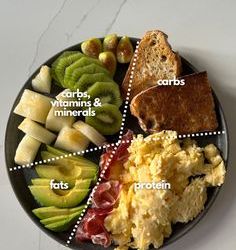



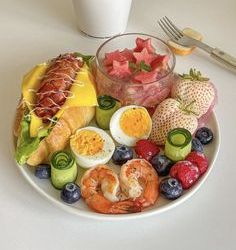

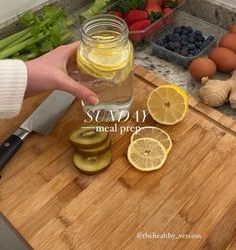
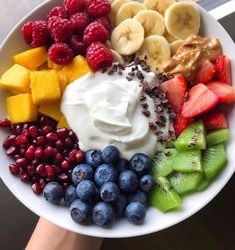
Poise & Progess: Formulating My Meal Plan
Firstly, I am not an expert or dietician or whatever. With the help of Chat GPT I’ve compiled a list of meals and snacks that I can incorporate into a meal plan and that will allow me to reach my fitness/body goals.
I will also mention that I mainly follow a pescatarian diet but I am not entirely strict with it. I find that cutting out meats, not including seafood, works well with my body and digestive system but I don't mind a grilled chicken salad every once in a while.
So below you'll find my balanced meal plan grouped by meals.
Certainly! Here's the balanced meal plan grouped by meals, without the days specified:
Breakfast:
Scrambled eggs with spinach and tomatoes
Greek yogurt parfait with fruits
Oatmeal with bananas, nuts, and cinnamon
Whole-grain pancakes with yogurt
Whole-grain toast with scrambled eggs
Smoothie (spinach, banana, berries)
Overnight oats with almond milk
Avocado toast with fruits
Lunch:
Grilled chickpea salad with quinoa or rice
Chickpea stir-fry with noodles or rice
Lentil and vegetable soup with a roll
Spinach and feta stuffed bell peppers
Quinoa and black bean bowl
Shrimp wrap with a side salad
Tuna or chickpea salad with whole-grain bread
Snacks:
Greek yogurt with nuts and honey
Hummus with carrot and cucumber sticks
Cottage cheese with mixed berries
Apple slices with peanut butter
Handful of almonds and dried fruits
Celery sticks with almond butter
Dinner:
Baked salmon with broccoli and sweet potato
Lentil burger with mixed greens and veggies
Grilled shrimp with quinoa and veggies
Tofu stir-fry with brown rice
Grilled fish with sweet potato and asparagus
Baked fish with roasted veggies and couscous
Stuffed bell peppers with a side salad
If you'd like, you can feel free to mix and match these meal ideas to create a balanced and varied eating plan that suits your own preferences, goals, and dietary needs.
#level up journey#leveling up#black girl moodboard#black woman in luxury#feminine energy#hypergamy#luxury aesthetic#luxury lifestyle#soft life#femme fatale
669 notes
·
View notes
Text
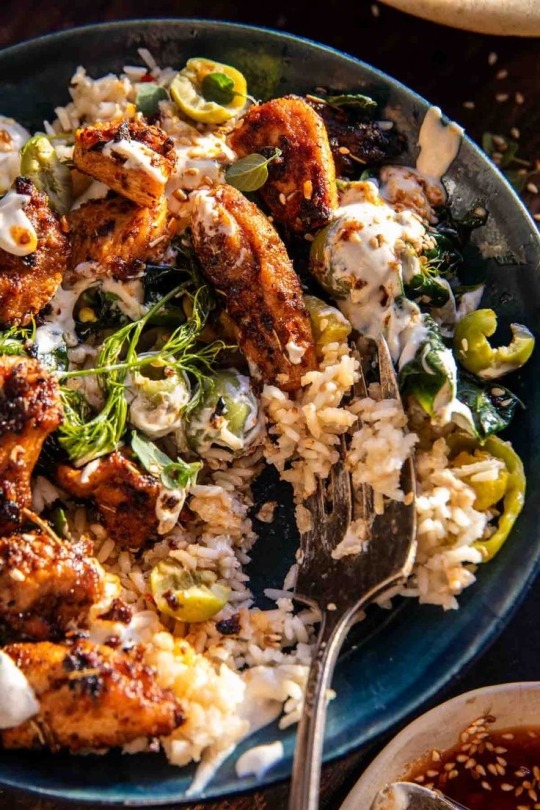
Nutrient-dense meal prep recipes that can help promote healthy eyesight:
1. Salmon and Quinoa Salad:
- Cook quinoa according to package instructions and let cool.
- Season salmon fillets with olive oil, lemon juice, and herbs, then bake until cooked through.
- Combine quinoa, mixed greens, cherry tomatoes, cucumber, and avocado in a bowl.
- Top with flaked salmon and a drizzle of balsamic vinaigrette.
2. Roasted Vegetable and Chickpea Buddha Bowl:
- Toss chopped sweet potatoes, bell peppers, zucchini, and red onion with olive oil and seasonings.
- Roast in the oven until vegetables are tender and slightly crispy.
- Serve over cooked quinoa or brown rice, along with roasted chickpeas and a dollop of hummus.
3. Spinach and Feta Stuffed Bell Peppers:
- Cut bell peppers in half lengthwise and remove seeds and membranes.
- Saute spinach, diced tomatoes, garlic, and feta cheese in a skillet until wilted.
- Stuff the bell peppers with the spinach mixture and bake until peppers are tender.
4. Lentil and Vegetable Soup:
- Saute onions, carrots, celery, and garlic in a large pot until softened.
- Add lentils, diced tomatoes, vegetable broth, and seasonings.
- Simmer until lentils are cooked through, then stir in chopped kale or spinach before serving.
5. Greek Chicken Bowls:
- Marinate chicken breasts in olive oil, lemon juice, garlic, and oregano.
- Grill or bake chicken until cooked through, then slice into strips.
- Serve over a bed of cooked quinoa or brown rice, along with cucumber, cherry tomatoes, red onion, feta cheese, and a drizzle of tzatziki sauce.
These meal prep recipes are packed with nutrients that are beneficial for eye health, including vitamins A, C, E, and zinc, as well as omega-3 fatty acids and antioxidants.
#food for thought#food fight#healthy food#comfort food#fast food#food photography#foodie#food#foodpics#foodlover#japanese food#tw food#foodmyheart#reciprocity#pasta recipe#salad recipes#soup recipe#recopilación#recipies#recipe#recipes#pasta recipes#tra reciepts#healthy salad recipes#healthy lunch ideas#healthy lunch#healthy diet#healthy#healthy living#healhtylifestyle
162 notes
·
View notes
Note
Question about Cycle Syncing. Do you know where i can find, like a masterlist of food that fits into the steps of the cycle? I always see the same food but how abt the rest? Would be nice to know for example for meal building.
MASTERLIST: NUTRITION CYCLE SYNCING

This post is a masterlist of everything that is recommended you eat while cycle syncing. if you don’t know what that is, read this beginner guide.
This post is a researched post, because I actually couldn’t find a proper masterlist. So, I researched what kinds of nutrients you need during your 4 phases, but I am NO DOCTOR. Just a little disclaimer!
MENSTRUAL/FOLLICULAR PHASE - high iron, vitamin C foods
VEGETABLES
Spinach
Silver beet
Broccoli
String beans
Peas
Sweet potatoes
Beet greens
Dandelion greens
Collards
Chard
Chilli peppers
Sweet yellow peppers
Parsley
Brussel sprouts
FRUITS
Oranges
Guavas
Black currants
Cantaloupe
Kiwis
Lemons
Lychees
Papayas
Strawberries
Oranges
Watermelon
Figs
Prunes
PROTEINS
Beef
Lamb
Liverwurst
Pork
Veal
Dried beef
Eggs
Shrimp
Clams
Tuna
Sardines
CARBS/OTHER
Whole wheat bread
Enriched pasta
Rye bread
Enriched rice
Tofu
Beans
Lentils
OVULATORY PHASE – complex carbs, lean proteins, anti-inflammatory, vitamin B6, folate/choline
VEGETABLES
Carrots
Spinach
Sweet potato
Red potato
Green peas
Chickpeas
Butternut squash
Asparagus
Turnip greens
Romaine lettuce
Beets
Sweet corn
Mushrooms
Pumpkin
Parsnip
Cauliflower
FRUITS
Bananas
Avocado
Mango
Blueberries
Apple
Peaches
Tangerine
Pink grapefruit
lemons
PROTEINS
Egg whites
Strained yoghurt
Skinless white meat poultry
Plain greek yoghurt
Low fat cottage cheese
Tofu
Lean beef
Powdered peanut butter
Beef liver
Pork loin
Bison
Organ meat
CARBS/OTHER
Lentils
Kidney beans
Green peas
Walnuts
Flaxseeds
Cashews
Almonds
Pistachios
LUTEAL PHASE – High fibre, vitamin B12, magnesium
VEGETABLES
Spinach
Swiss chard
Collard greens
Green peas
Sweet corn
Cabbage
Arugula
Bok choy
Celery
Lettuce
FRUITS
Pears
Strawberries
Avocado
Apples
Raspberries
Blackberries
Blueberries
Bananas
PROTEINS
Animal liver
Animal kidney
Clams
Swiss cheese
Turkey
Crabs
Ham
CARBS/OTHER
Oats
Popcorn
Almonds
Fresh coconut
Sunflower seeds
Dark chocolate
Wheat
barley
#menstrual cycle#women’s cycle#cycle syncing#women’s health#health#self healing#clean girl#green juice girl#cleaneating#healthy eating#healthy girl#glow up#glow up era#nutrition#healthy diet#meal prep#meal plan#anonnie#ask
429 notes
·
View notes
Text
How to follow a Mediterranean Greek diet
The Mediterranean diet naturally expands throughout the coastal countries of South Europe, North Africa and the Middle East but there are some small differences between their cuisines. So here I am writing specifically about the Greek version of the Mediterranean diet, known for its delicious, natural flavours and its significant health benefits.

Eat daily:
Olive oil: the pillar, the liquid green gold of the Mediterranean Greek diet. Olive oil should be used ideally exclusively for all purposes. It's dressing salads, it's used in cooking and in fact it's traditionally what is used in frying too. Replace all types of oils, butter and margarine with olive oil even when making pastries. The only problem here is that outside of the Mediterranean basin olive oil can be pricey, however that's the foundation the diet is based on. If you are interested in following the traditional Greek diet for taste or health purposes, it is good to really incorporate olive oil in your daily cooking. If it’s not possible to afford buying olive oil all the time (although you could balance it out by not buying other oils and butter), a non-Greek-typical but equivalent alternative could be avocado oil. However, I doubt avocado oil or any other oil can remotely compare to olive oil in health properties, taste or in any other positive quality 🫒
Vinegar: Just like olive oil, vinegar is a very important ingredient and is also used in natural remedies However, it can hurt a sensitive GI tract if consumed in large portions. A little bit of it added to meals frequently is very healthy. Apple cider vinegar is also very loved and used in salads often 🍇
Vegetables: no portion can be too much (wild greens, garlic, onions, cauliflowers, cucumbers, eggplants, beets, peppers, spinach, artichokes, zucchini, peas, lettuce, the list never ends). Tomatoes and broccoli are recent additions to the Greek diet however they were integrated perfectly to the Greek cuisine. In general, all vegetables can be enjoyed freely with some moderation in the potatoes, especially when fried 🥗
Fruits: grapes, berries, apples, melons, cherries, figs, prunes, sour cherries, peaches, pomegranates are the most historically loved fruits in the Greek diet. Since the middle ages citruses like the orange, the lemon and the mandarin are more and more loved. Greeks nowadays use lemon almost more than vinegar and both have become integral components of the Greek diet. Obviously, tropical fruits like, say, banana, mango, grapefruit are not present in the traditional Greek diet, however all fruits are good fruits and you can enjoy them freely 🍎
Legumes. Eat freely to the tolerance of your body. Legumes can be too heavy for some GI tracts. Legumes are a great source of protein and fibre. Choose brown lentils, white beans, fava beans, chickpeas, giant beans and black eyed peas the most 🫘
Nuts, seeds: almonds, walnuts, sunflower seeds, peanuts etc. Eat as much as your body can take, because everybody is different 🥜
Mushrooms: mushroom it up! A great healthy way to have them is grilled with herbs and plain or apple cider vinegar dressing 🍄🟫
Whole grains: this is the traditional way to eat grains. Brown bread, oats, whole wheat pasta 🌾
Fish and seafood: find and eat them fresh. Instead of buying them deep frozen from the big markets, find local fish stores if your place is coastal and has them. Eat both large but especially small and medium sized fish. Some fish like salmon and tuna should ideally not be consumed daily due to their high levels of mercury and fats 🐟🎣🍤
Herbs and spices. Feel free to use as much as you want however if you are interested also in the flavours of the Greek diet besides the health benefits, a tip is that Greek dishes do not contain extremely hot spices 🌿
Water: A lot of water daily and, mind you, plain clear mineral water. No flavoured water, definitely not sparkling water and ideally no other liquids in place of the water. I mean, sure you can have liquids but you should ALSO have plain water 💧
Eat a few times per week:
Poultry: Poultry and lean meats entered the Greek cuisine mostly after the Middle Ages however they are nowadays enjoyed as part of the Greek Mediterranean diet because they are tasty and healthier than other types of meat. Chicken has become especially popular in the Greek cuisine. Other birds are the pheasant, the quail, the turkey and more sparsely the duck 🍗
Eggs: eggs are healthy and should be consumed a few times per week but not daily because they can cause a rise in cholesterol levels 🥚
Dairy: Greeks LOVE dairy products, especially the various types of cheese, however they are often irritating to the GI tract and they are linked with rises in the level of inflammation in the body. This is why you should ideally limit them to a few times per week. One exception is the yoghurt, which is fermented and can be perhaps consumed more frequently due to its beneficial properties. Important note: if you want to follow the Greek diet, you should ideally opt for milk and other dairy products from goats and sheep! Cow milk is not traditionally used in the Greek cuisine often and sheep and goat milk are significantly healthier and more nutritious. The only drawback is the stronger smell, however if you can get past that, it is strongly advised to switch to those instead of cow milk. Another note: what is known as “Greek yoghurt” in western countries is not in fact a true Greek yoghurt. What you call Greek yoghurt is to us simply a strained yoghurt, a yoghurt from which the whey has been removed. Sometimes in western markets (and in Greek “modern” dessert yoghurt products) butterfat and powdermilk is added to them and they are mostly made of cow’s milk. Again, a traditional Greek yoghurt is made of sheep, goat milk or a mix of both and is unstrained. It also has a trademark thickened skin on its top (dunno if this is the actual term lol) which is in fact the part of the yoghurt that contains the most nutrients and personally it’s the tastiest part of the yoghurt but apparently it is not for everyone. As an example, a study showed that an unstrained sheep yoghurt has more protein, more omega-3 fatty acids and minerals yet fewer calories and fats than a strained cow yoghurt 🍦🧀
Wine: in small portions, like a small glass up to a few times per week and always in combination with your meal. You don’t drink it to get hammered, you drink it for the health benefits it has in very moderate quantities and for the reasonable mild euphoria it causes before it becomes harmful. The GI tract is linked to the brain and is detrimentally influenced by negative emotions. This is why it is important to try to be in a good mood, relaxed and peaceful when you sit down to eat. A sip of wine now and then can be good for that 🍷
Eat once per week or ideally less:
Red meat like pork or beef. In fact, beef should be the one most avoided not only because it is indeed the rarest of the common meats used in traditional Greek cuisine but also because you can’t separate the fat from the meat as easily as with pork. To follow the Greek style in a healthy way opt for goat, then lamb or pork and make beef your most occasional meat dish 🥩
Processed meats should be eaten rarely. If you are in a mood for it though, opt for Greek style sausages with herbs in or bacon at most. Cured meats like ham are better to be avoided but turkey is the healthiest of them. They are not a part of a traditional Greek cuisine though.
Refined grains can be enjoyed weekly but should not replace whole grains
Pastries. What’s new, pastries are not ideal for health. However, if you are yearning for something sweet, if you want to keep it healthy as much as possible in the “Greek way”, opt for desserts made of healthy ingredients like honey, nuts, olive oil and fruits. Chocolate came to Greece in the 19th century, however it has become an integral part of confectionery since then. Opt ideally for dark chocolate, combined with nuts or fruits such as oranges and prunes. Greeks especially love chocolate combined with nuts.
Soft and sugary drinks. Avoid them overall, especially the processed products in the markets. If you need a sweet drink really bad, you can keep it traditional by making your own sweet lemonade, sour cherry, pomegranate etc drink at home. You could also enjoy small quantities of lemon or mastic liquors which are good for digestion.
BONUS TIPS & PHILOSOPHY:
Try to find mastic if it’s available where you live. The mastic is a resin produced from the mastic tree, a species endemic to the Greek island of Chios and a small part of the opposite coast of Turkey. It has numerous beneficial properties, especially for digestion and gut health, and it combines them with a very pleasant fresh and sweet flavour. You can find it in gums that boost digestion, in drinks, in pastries and even in non-edible products like toothpastes. Learn about it and give it a try, no matter if you are interested in following Greek diet or not.
Greek cuisine does not go berserk on as many ingredients as possible (however Greeks typically add more ingredients than, say, Italians and perhaps fewer than the Middle Easterners). Don’t worry about adding as many foods and nutrients in one single dish. The most important thing in Greek cuisine philosophy is to pick the finest ingredients. Avoid deep frozen or precooked and processed ingredients. Pick whole fruits and vegetables from your local small grocery store. For example, don’t buy a watermelon slice in a zelatin bag from the supermarket. Take the whole freaking watermelon home. You heard me right. It’s heavy, yes, but you would be surprised how much tastier and healthier it is this way. Go to the butcher for meat. Go to the specific cheese shop for cheese. Go to the fisherman for fish and seafood. Go to the pastry shop and get a nice dessert instead of buying candies from the market.
Remember that in moderation you can eat most of the foods you desire, especially if they are not processed foods. There is nothing about the Greek diet that is restrictive in terms of its philosophy - historically the intake of various foods was regulated only based on availability and price. There are no foods you should limit due to any perception of them being “bad” and you should never feel guilty the moment you are actually having the food. Just work slowly and progressively by building gradual appreciation for healthy foods and prize less nutritious foods as occasional taste bud rewards.
As said above, a good mood is crucial when you sit down to eat. In the history of the Greek society this translated into eating with friends and / or family, maybe with the occasional sip of wine, ideally in a pleasant environment and always taking your time with your food. If some of these are less feasible than others, try alternatively to improve the setting in which you eat, to eat in an environment that calms you down. Schedule your meal so that you won’t eat in anxiety or hurry, if this is possible. Think of pleasant memories and feel grateful for your food. Cheers! Or, you know, εις υγεί��ν!
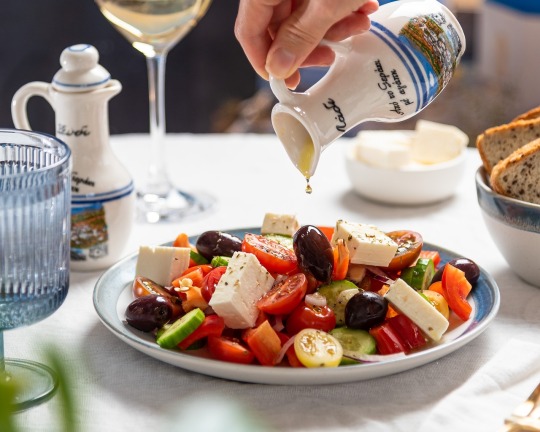
99 notes
·
View notes